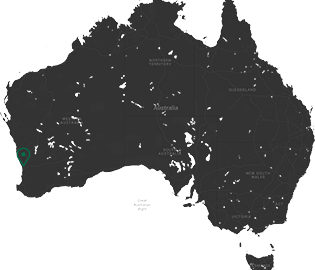1. Five things to consider when rates are low
2. What’s hot in property
3. Five types of asset finance and how they could help your business
4. Third and final call: what happens if nobody bids at an auction?
5. Bargaining power: How to negotiate your purchase price
6. Are property prices set to drop in the next three years?

Favourable interest rates are a borrower’s best friend, but should you lock in a low rate or go with a variable rate? Here are five things to consider.
1. How low can rates go?
Interest rates are at historically low levels and the current outlook suggests there may be further cuts in the medium-term future. If you lock in your rate now, you won’t reap the benefits of later decreases. The question is: how low do you think the rate will go before it starts to climb back up? Timing is crucial if you want to lock it down at its lowest point.
2. Balancing the budget
How are your budgeting skills? If you want to know your precise repayment obligations for the next one, three or five years, then a fixed rate term can give that to you. Be aware, however, that you may not secure the best rate. Consider this route if certainty is important to you.
3. Fixed or flexible?
Fixing a rate denies you some flexibility. Once you fix a rate, some lenders won’t let you make extra repayments to reduce your principal. If you come into extra money, such as a work bonus or an inheritance, you lose the opportunity to make what could be a sizeable dent in your mortgage.
4. Selling points
A fixed rate may put you at a disadvantage if you’re looking to sell your property in the foreseeable future. Lenders may charge a break fee if you make changes to your loan or pay it off early, which often happens when borrowers sell.
5. Fixed vs variable: It’s about 50/50
According to a study conducted by Canstar, a website that compares loans, the advantage of a variable versus fixed rate is fairly small over time.
Canstar compared an average three-year fixed-rate loan with variable rates over two decades. People who fixed their loan did better for 112 months, while those who chose variable were ahead for 123 months. “That’s pretty close to a 50/50 bet,” remarked Mitchell Watson, research manager for Canstar.
Seeing interest rates decrease understandably prompts borrowers to think about fixing their mortgage to a low rate. If you’re weighing up the options, consider the benefits and drawbacks of locking in a low rate versus the flexibility of a variable loan according to your personal circumstances.
Source: http://www.news.com.au/finance/economy/interest-rates…

Whether you’re buying a property to invest in or call home, it’s a good idea to look at emerging property trends, to support your purchasing decision.
Lifestyle locations
Buying a property that can accommodate a growing family in a major city is challenging on the average family income. Instead, some buyers are looking in outer metropolitan and regional areas within two hours’ drive of a capital city. These are considered “lifestyle locations”, according to REA chief economist Nerida Conisbee, because buyers can afford larger blocks and homes.
Properties in these outer locations are also a popular first investment, even if the buyer remains renting and working in the city. These ‘rentvestors’ are getting into the property market without giving up the benefits of their current lifestyle.
High-rises coming to the outer suburbs
Speaking of outer locations, apartments are no longer confined to CBDs. Many councils in outer metropolitan areas have given developers the go-ahead to create higher-density living quarters. Affordability is the key to this trend, but the changing nature of people’s employment, where workplace locations are no longer focused in city centres, also supports the move away from primary CBDs.
Keeping it all in the family
Another trend to watch is the move towards multi-generational households. These are becoming more common as elderly parents require care, or when they find living alone becomes too expensive. Families benefit because older relatives can supervise young children. According to John McGrath of McGrath Estate Agents, Asian immigration has given this trend a nudge, as multi-generational households are the norm in many Asian cultures.
Property sizes are growing to accommodate the increased number of people under one roof, with popular additions including extra bedrooms, granny flats and self-contained levels. Multiple bathrooms are also a must.
Sources:
http://www.realestate.com.au/news/where-are-people-migrating-to
http://www.yourmortgage.com.au/article/new-trends-emerge-among…
www.switzer.com.au/the-experts/john-mcgrath-property-expert/new…

Short of capital to buy equipment for your business? Consider asset finance to support your operations.
Asset finance is an umbrella term for any loan structure that helps a business purchase equipment, such as machinery or vehicles, for its operations. There are a number of loans designed to suit different situations.
1. Chattel mortgage or equipment loan
A chattel mortgage allows you to borrow money to purchase an asset. Your business owns the asset, but the lender has the asset as security until you complete the repayments. This frees capital and also gives your business automatic security for the loan.
2. Commercial hire purchase
With this option, the lender owns the equipment and your business pays hire fees to use it, which act as loan repayments. At the end of the agreed term, your business takes ownership of the asset. This spreads out the cost of the asset.
3. Finance lease
Like commercial hire purchase, a finance lease means the lender owns the equipment and the business pays hire fees to use it. At the end of the set term, however, the business can choose whether to purchase the asset. This spreads out the cost of the asset and also provides flexibility.
4. Operating lease
Again, an operating lease means the lender owns the equipment and the business pays hire fees to use it.
The difference is there is no option to purchase the asset. The leasing costs are deemed operational rather than a liability on your balance sheet.
5. Novated lease
A novated lease is a financial arrangement between a business, an employee and a lender. The business borrows money from the lender for a motor vehicle, which the employee then leases from the business. The business owns the vehicle until the employee repays the loan. The repayments come from the employee’s gross salary, so there are some tax benefits for the employee.
Businesses need capital to purchase essential assets, and there are a number of solutions to support funding gaps. Talk to your broker today about your asset finance options.

Selling isn’t a certainty at auction. In New South Wales and Victoria, for example, around a quarter of all auctioned properties are passed in.1 What does it mean for the vendor and prospective buyers when no one makes a bid?
After the auction
An auction campaign puts a property into the public eye, but not all interested parties will attend the auction or make a bid. This might be because they aren’t in a position to adhere to an auction’s binding sale conditions, or they need more time to consider the purchase. Other parties may see a chance to skip to the negotiating stage if no one is bidding.
In the wake of a failed auction, the agent will likely contact everyone who showed interest in the property during the sales campaign, in the hopes that one of them will make an offer.
Vendors: Research and regroup
If your property didn’t sell because your price was unrealistic, you might need to lower your expectations.
Find out how many days similar homes in the same area are typically on the market. Houses left on the market for too long tend to attract lower sale prices, so if your campaign has stalled, it might be wise to take a break. You may want to consider launching a fresh campaign at another time with different photos, a new write-up and perhaps a new agent.
Buyers: Get ready to bargain
For prospective buyers, an unsuccessful auction can be an opportunity to nab the property at a lower price. Following a failed auction, the highest bidder earns the first option to negotiate with the seller. If their offer is rejected, the property will be open to all parties.
There’s a good chance the vendor will be more motivated to sell if their property is still on the market more than two or three weeks after auction.
A failed auction may seem disastrous, but many properties that don’t sell under the hammer sell privately within a few weeks. So whether you’re a buyer or the vendor, be prepared to talk numbers.
Source: http://www.realestate.com.au/auction-results

No one wants to feel like they’ve been taken for a ride, so when you’ve found the right property, how do you get it for the right price? Here are some things to consider when it comes to purchasing negotiations.
Do your homework
Property prices are influenced both by demand and how much other potential buyers are willing to pay. Before you make an offer, research similar properties that have sold recently in the same area. Also consider organising a pre-purchase building report, as any issues with the building may give you leverage to negotiate a lower price.
Investigate the seller’s motivations
It pays to investigate the seller’s circumstances. The more you know, the more negotiating power you will have.
Ask questions such as:
• “Why is the current owner selling?”
• “Have there been any offers?”
• “How long has the property been on the market?”
Keep your cool
Play your cards close to your chest and don’t reveal your position. This includes keeping the maximum amount you’re willing and able to spend confidential. Otherwise, the agent may try to push you closer to your maximum, even if your current offer is a fair one.
If you’re serious about the property, it might be worth making an offer slightly above estimated market value, as long as it is still within your means. But don’t risk significantly overpaying just because you’ve become attached. New properties are being listed all the time, so something else will always come along – and it might even be better.
Most importantly, try to keep your emotions separate from your negotiations. Don’t let competitiveness or fear of losing the property push you past your limit.

Things could be looking up for homebuyers, with a new report forecasting a drop in property prices over the next three years. But could this also signal the end of the Australian property market golden era?
According to BIS Shrapnel’s Residential Property Prospects 2016-2019 report, median house and unit prices in our capital cities will be lower by 2019. This is due to a perfect storm of slower population growth, falling immigration levels and an oversupply of new homes.
The Australian Prudential Regulatory Authority’s recent work to tighten lending standards has slowed investor activity, also contributing to the downward trend. Investors have previously been a huge driver of market demand, particularly in Sydney and Melbourne.
How each capital might be affected
In Darwin and Adelaide, median house prices are forecast to drop by two per cent by June 2019. That’s around nine to ten per cent in real terms, given the general rise in the cost of living and wages over that period. Darwin will continue to be affected by oversupply, falling resource sector investment and weak population growth, while Adelaide faces the closure of its Holden factory in 2017.
Surging house prices in Melbourne and Sydney could also slow considerably, with BIS Shrapnel predicting a fall of one per cent in these capital cities.
Perth is expected to be hit hard, as it continues to feel the fallout from the mining boom. Prices in the west coast capital could drop around eight to nine per cent in real terms for houses, with potentially even bigger falls for units.
The strongest performers, according to the report, will be Brisbane, Canberra, and Hobart.
Are apartments at more risk?
Apartments, which are being built at record rates in most capital cities, could be affected more than houses.
According to BIS Shrapnel, 220,000 new dwellings began construction in 2015-16, with a record 49% expected to be multi-unit dwellings. A large number of apartment complexes will be finished in 2017-2018, potentially leading to an oversupply, lower rents and a drop in value.
The median unit price over the next three years is expected to drop by eight per cent in Melbourne, five per cent in Sydney and six per cent in Brisbane.
After several years of high property prices and a tough market for new homebuyers, the tide could now be turning – it just might take a few years.
Sources:
http://www.bis.com.au/reports/res_prop_prospects…
www.bis.com.au/verve/_resources/RPP_2016_Release_FINAL-MR.pdf























